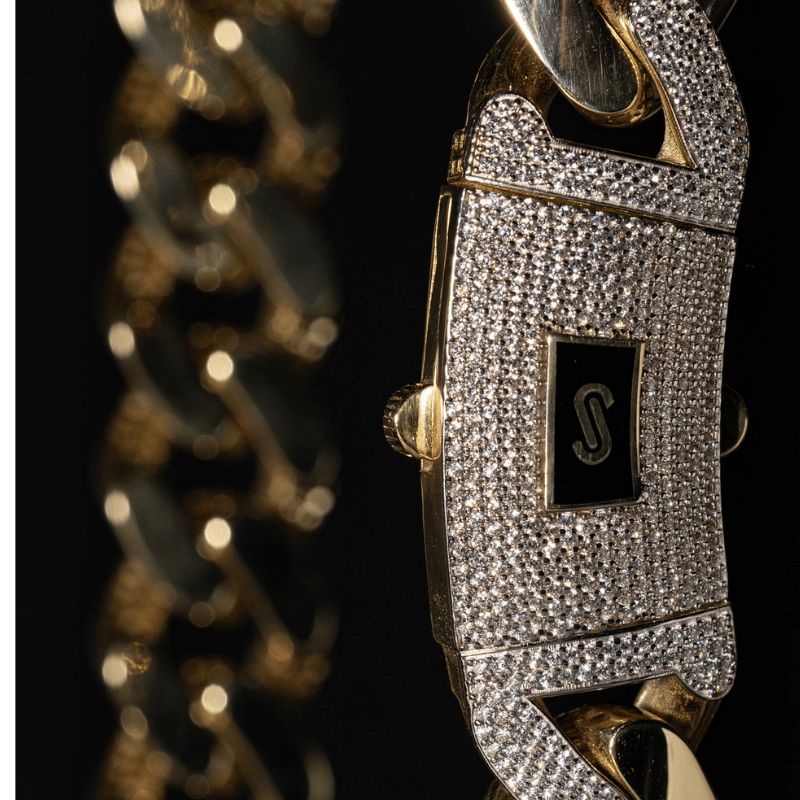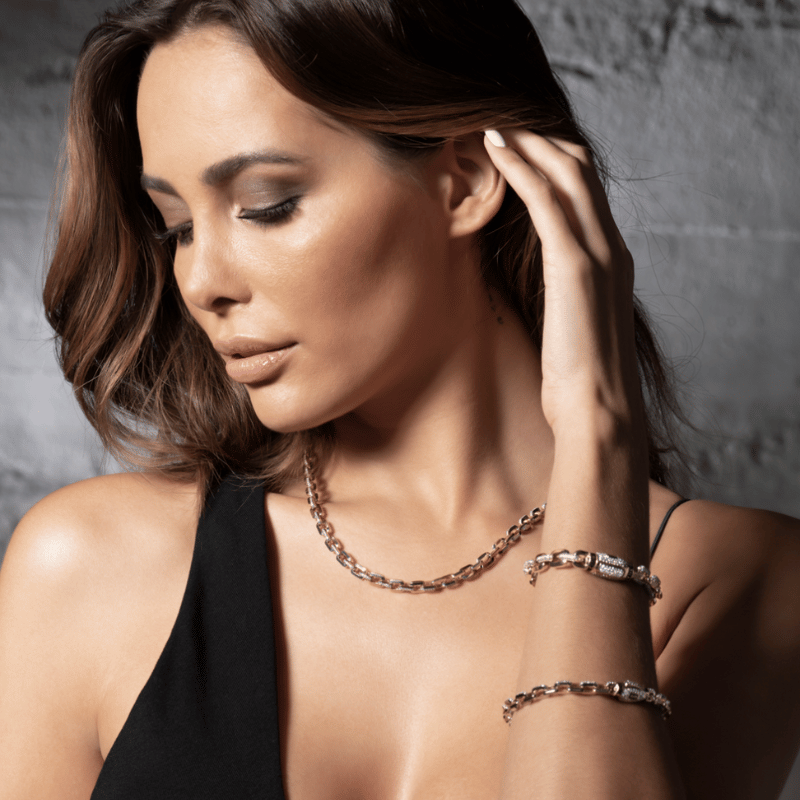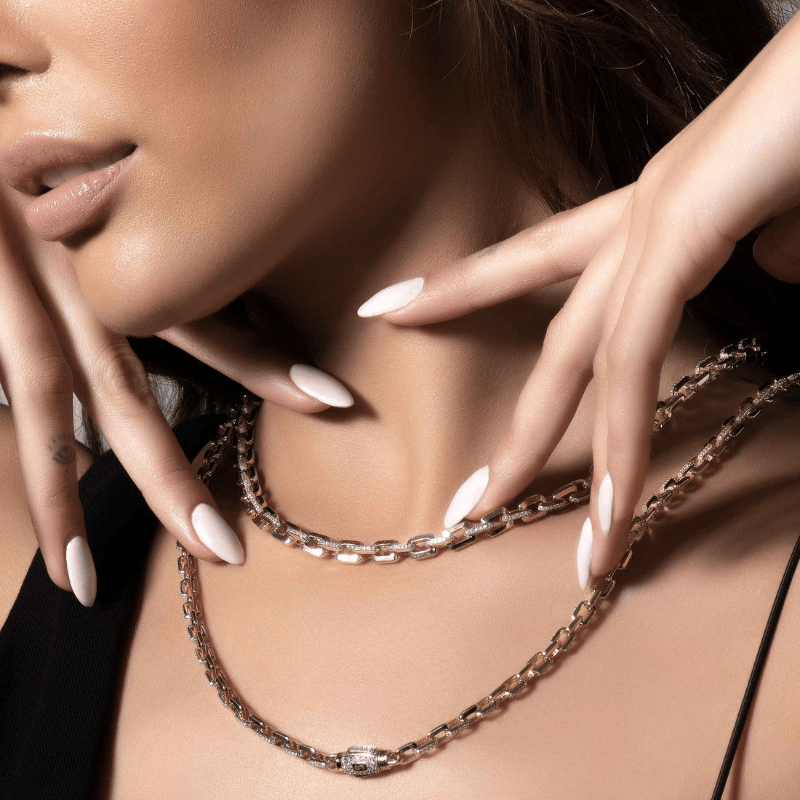
Gold Chains vs. Other Metal Chains: Comparing the Pros and Cons of Different Jewelry Materials
Whether you’re new to discovering which metals for jewelry you prefer or you’re a long-time jewelry wearer who’s looking forward to experimenting with different metal jewelry options, we’ve got the perfect blog post for you! Read on to discover how different types of metals in jewelry compare to one another in terms of both price and performance.
You’ve likely heard the term “gold standard” before. Originally coined for a currency valuation system in the late 19th and early 20th centuries, the phrase has come to stand for the best or most sought-after version of a thing. Following the same logic, using gold for jewelry making has been a best practice for centuries, as this precious metal is one of the most sought-after materials by jewelry makers and wearers alike.
Yet a historical preference for gold doesn’t mean there aren’t other jewelry metals out there—some of which have been around for centuries while others are more modern materials. With advancements in jewelry-making techniques and technologies have come a variety of metals to make jewelry, each appealing in its own right and for different reasons.
The Case for Color

The reason cited most often by people who are trying to choose between gold vs. silver jewelry has to do with skin coloring. As age-old wisdom suggests, people whose skin has warmer undertones tend to look better in gold jewelry, while those with cooler undertones are better suited to silver pieces. And while there may be some truth to that, there are a lot more metals in jewelry making to experiment with these days—not to mention, it’s considered cool by today’s standards to mix and match your metals in jewelry.
If you’re looking to compare gold with other jewelry types, here are some facts to know:
Gold vs. Silver
- Both gold and silver come in a variety of colors, with gold pieces available in yellow gold, white gold, and rose gold. Similarly, silver jewelry comes in various grades that indicate its level of purity. When it comes to silver, the industry standard is sterling silver, which is an alloy of 92.5% silver with 7.5% copper and is generally indicated as .925 silver.
- The addition of copper to the metal alloy makes silver pieces more durable than gold ones, but it also makes them more prone to tarnishing.
- Of course, sterling silver isn’t the only type of silver used in wearable pieces, as different types of jewelry can incorporate more valuable grades of silver. Britannia silver is a type of sterling silver that originated in the UK, with a slightly lower amount of copper than traditional sterling silver (95.84% silver and 4.16% copper). There is also Argentium silver, a relatively recently patented alloy of mostly silver with a bit of copper and metalloid germanium (93.5% silver, 5.5% copper, 1% germanium,), making it tarnish-free but also more expensive than sterling silver. At a grade of .999, fine silver is 99.9% pure silver, although this is hardly ever used in jewelry due to its high level of malleability.
- While we’re on the subject of malleability, gold is the most malleable of the precious metals.
- Gold is tarnish-resistant and does not oxidize, whereas silver oxidizes easily.
- Gold jewelry is also more durable than silver, as silver jewelry is softer and tends to get scratched more easily.
- Gold requires less upkeep and maintenance than silver jewelry, which requires regular cleaning and polishing, as well as proper storage away from heat and moisture.
- Last but certainly not least, gold is more expensive than silver—which may be an important consideration for those who are on a budget.
Gold vs. Platinum
- Gold jewelry comes with different color options, whereas platinum as a jewelry metal is always the same color.
- Gold is scratch-resistant, but platinum is more durable and can be longer-lasting than gold. This is especially true for purer karats of gold such as 22K or 24K, which are generally considered to be more brittle options for gold jewelry.
- Platinum is the most hypoallergenic out of all the types of precious metals, so it may be a good option for those who have skin sensitivities.
- If price is your concern, gold is more affordable, so you can consider going with a white gold option over a platinum piece if you’re on a budget.
Gold vs. Stainless Steel
- Both gold and stainless steel are scratch-resistant jewelry metal types, although white gold may get scratched over time from daily wear.
- Stainless steel jewelry is also available in a single color, whereas gold jewelry comes in several colors.
- However, stainless steel is much more durable than gold overall. As a metal, it is more than twice as hard as gold, making stainless steel jewelry pieces extremely long-lasting.
- When it comes to allergies, stainless steel is often known as a hypoallergenic metal, thanks to the wide use of a type of stainless steel known as 316L in body piercings. Although not all forms of stainless steel are hypoallergenic, on the whole, stainless steel is still better suited to those who may have a nickel allergy than white gold, as it has lower nickel content.
- In terms of price, stainless steel is cheaper than white gold. Although the finishes on white gold vs. stainless steel jewelry are somewhat different—with stainless steel having more of an overt shine—it can still be a good dupe for white gold.

Is there a metal better than gold?
While the idea of “better” is a subjective one, there are different types of jewelry metals—such as silver, platinum, and stainless steel—each of which comes with its own pros and cons. The choice of material ultimately comes down to several important factors such as skin coloring, type and frequency of wear, allergy requirements, pricing, as well as plain aesthetic preference. If you’re able to, it’s a good idea to experiment with wearing different metals to find the one that’s best suited to you and your lifestyle.
Which metal chain is best?
The best metal for chains is a highly personal matter, but historically gold has been a preferred metal. Although gold is often considered the best material for men’s necklace, in recent years, several other contenders have risen to prominence, as well. Stainless steel and platinum are popular options for metal chains among jewelry wearers looking to experiment with a different look.
What metals can be mistaken for gold?
Yellow gold is a rather hard material to mimic, and rose gold is harder still—perhaps the closest metal that can mimic the look of oxidized gold is copper, and even that will still pose a discernible difference for those in the know. When it comes to white gold, certain grades of silver can be mistaken for metal, as can platinum and stainless steel in terms of color. However, it must be noted that stainless steel has a different shine to it than gold, which may be a clear giveaway if you’re looking to use it as a dupe for white gold.
What is alloy jewelry?
Alloy jewelry refers to pieces that include two or more metals, one of them generally being a precious metal. These metals are often mixed together to bolster the composition of the pure metal and make the overall piece more durable for daily wear. Some of the most popular alloys used in jewelry include gold, silver, platinum, and stainless steel. People may prefer one metal over another due to different reasons, making the best metal for men’s necklace or women’s necklaces a highly personal preference for jewelry wearers.


